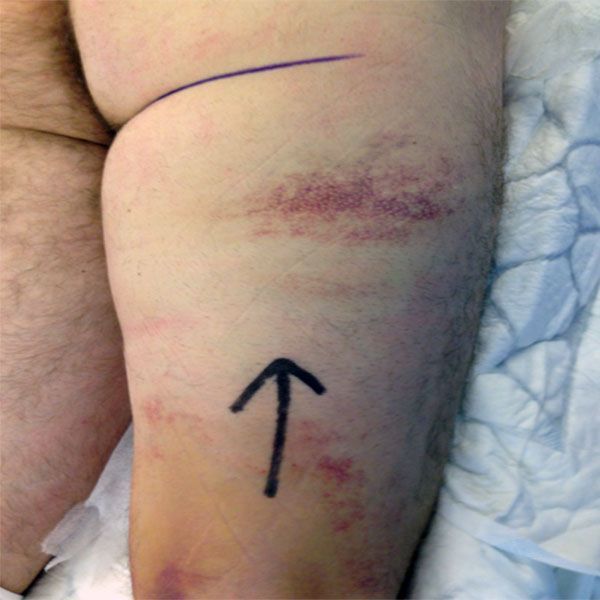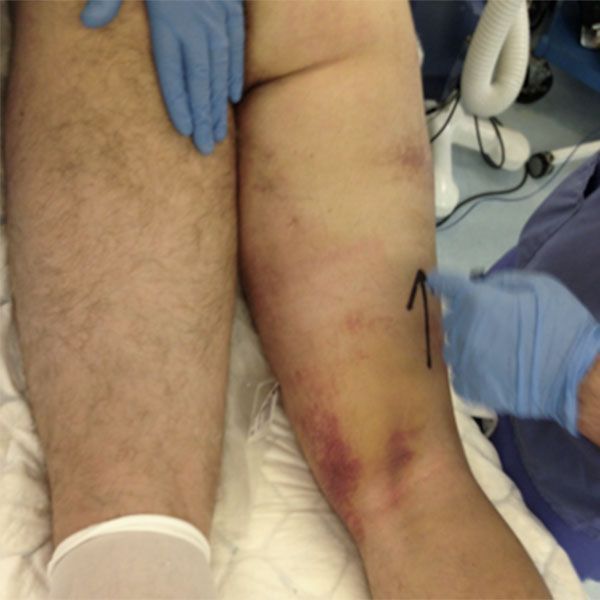Hip Hamstring Tear
Proximal hamstring tendon tears (or avulsion) from the pelvis (ischial tuberosity) is becoming recognised much more commonly. Although proximal hamstring tendon tears represent only a small proportion of all hamstring injuries, if left untreated, may leave the athlete with chronic thigh pain, a protracted recovery course and a weaker hamstring compared to those surgically repaired. Dr Agolley is a hip surgeon on the Gold Coast who has a special interest in surgical repair of the proximal hamstring tendon tears in athletes and the weekend warrior.
Proximal hamstring tendon tears are a different injury to the more common musculo-tendinous or mid-substance muscle hamstring injuries, that are better treated non-operatively via a sports doctor.
Typical sports that hamstring avulsions occur are those with resisted hip extension, or explosive running e.g. sprinting, rugby, football, AFL.
What are the symptoms?
Proximal hamstring tendon tears usually occur during sport when the hip is forcefully flexed against a hamstring that is contracting (an eccentric load injury) e.g. a player on the bottom of a collapsing rugby scrum pack. Pain is experienced in the gluteal crease, and there is a limp. Occasionally there are shooting pains down the back of the thigh, to the calf and foot due to sciatic nerve irritation. The examination reveals tenderness at the ischial tuberosity, massive ecchymosis, swelling and bruising of the posterior thigh, and weakness of hamstring contraction in the prone position. With large retractions, the hamstring is seen to bunch up towards the knee.


What investigations will be required?
In the presence of tenderness at the ischial tuberosity, further imaging is mandatory for diagnosis. A plain X-ray will elucidate a bony injury in association with the hamstring avulsion, more common in skeletally immature athletes. MRI scan is the gold standard imaging modality to help elucidate the anatomy of the tear and approximate the amount of retraction of the tendon toward the knee.
When should I have surgery?
Surgical repair of proximal hamstring tendon tear, greater than 2cm retracted, soon after injury has shown better patient satisfaction, improved pain relief, improved hamstring endurance, and a higher rate of return to the same level of sport as compared to non-operatively managed proximal hamstring avulsions. Dr Agolley will discuss the treatment options with you.
The procedure and post-operative recovery
In general for most patients:
- Your anaesthetist will perform general anaesthetic
- You will be face down on the procedure table
- In early stages after injury, a cosmetically pleasing incision is made in the crease of your buttock over the insertion of the hamstring
- The hamstring tendon tear is identified and important nerve and blood vessel structures are protected
- Sutures are anchored to the bone, and the hamstring tendon is repaired securely back to the bone
- The surgical site is thoroughly cleaned, closed and dressed
- A special brace is applied to help minimise tension on the newly repaired hamstring tendon
As a general guide, the post-operative recovery consists of:
- An in patient hospital stay for 1 night
- Mobilising with crutches without taking any weight through the operated limb
- The brace will be progressively released over several weeks to allow rehabilitation of the hamstring
- Return to sedentary work 2 weeks
- Weight bearing on the operated limb 4-6 weeks
- Return to heavy manual labour 8-12 weeks
- Return to full sport from 12 weeks
Specific precautions
There may be numbness around the surgical site or in the calf or foot. This usually resolves quickly, but may persist for a few weeks. Major nerve or blood vessel injury is uncommon. Blood clots in the legs and lungs are also very uncommon. Infection is uncommon as several steps are taken to minimise risk. Re-rupture of the hamstring repair is not common in repairs completed within 6 weeks of injury, however the risk increases thereafter.
More Information
For more information, see the American Academy or Orthopaedic Surgeon website.
